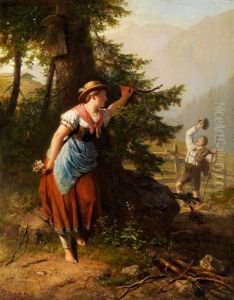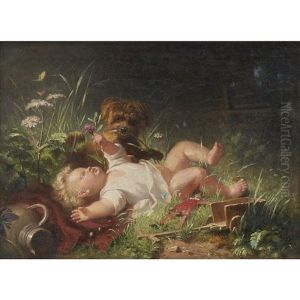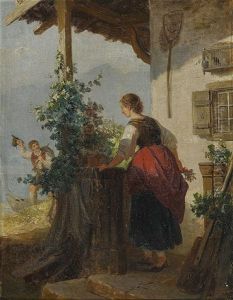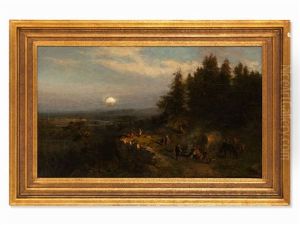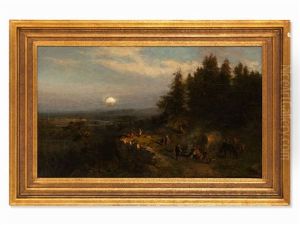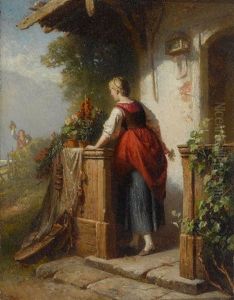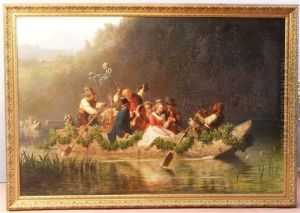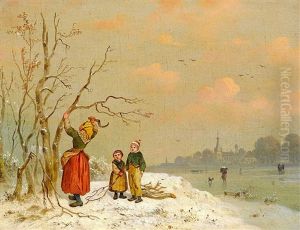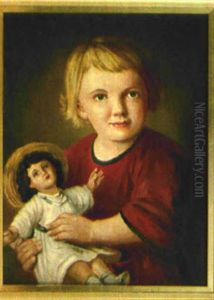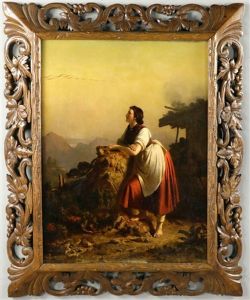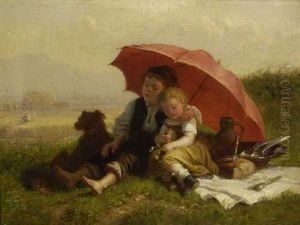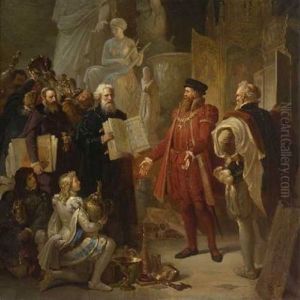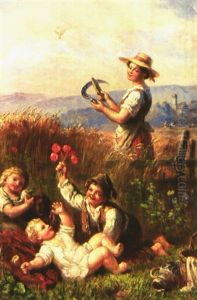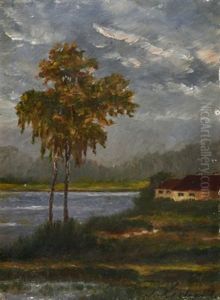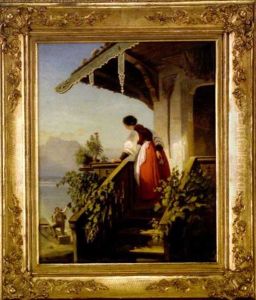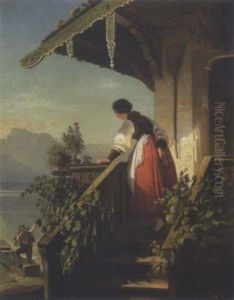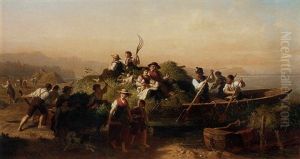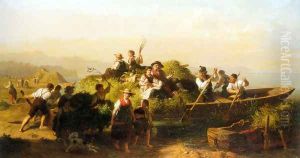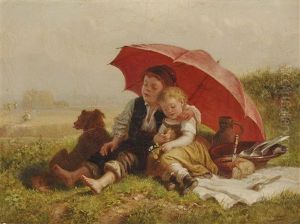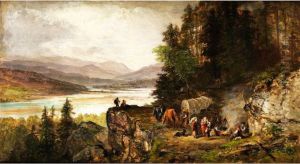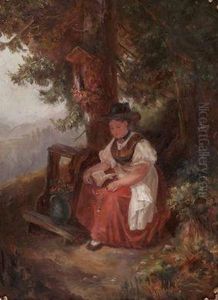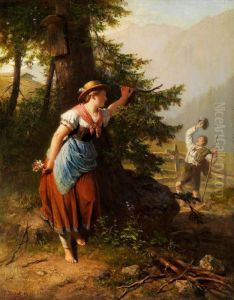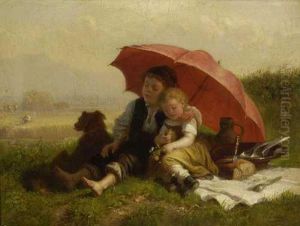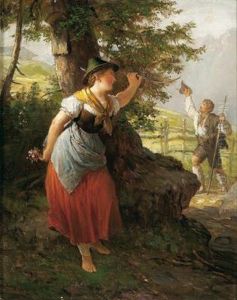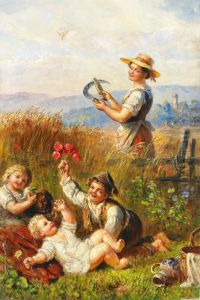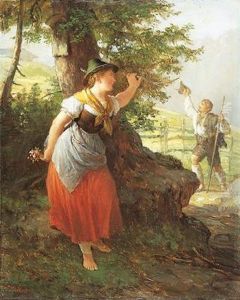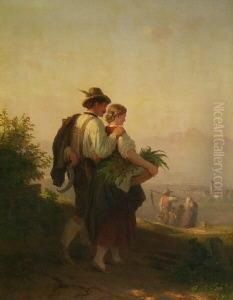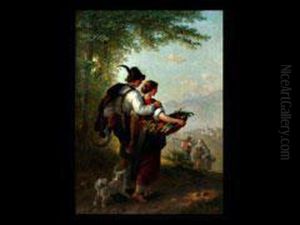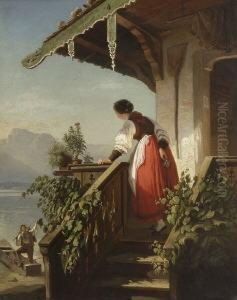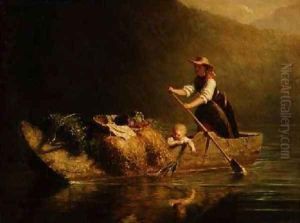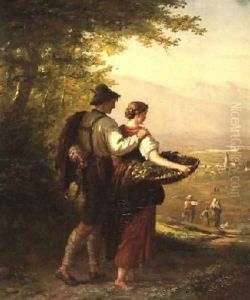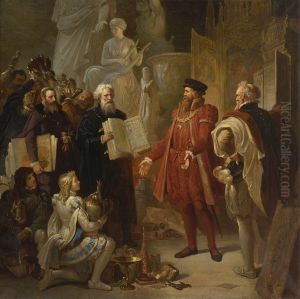Julius Kockert Paintings
Julius Kockert was a lesser-known yet profoundly talented German painter and artist, whose life spanned the 19th and early 20th centuries, a period rife with artistic innovation and the birth of modern art movements. Born in 1827, Kockert embarked on his artistic journey in an era dominated by Romanticism, yet he witnessed the rise of Impressionism, Post-Impressionism, and the early stages of Expressionism throughout his lifetime. Despite not gaining the fame of his contemporaries, Kockert's work contributed to the rich tapestry of European art during a transformative period.
Kockert received his formal art education at the Academy of Fine Arts in Munich, a prestigious institution that nurtured many artists who would go on to shape the direction of European art. In Munich, Kockert developed a keen interest in landscape and portrait painting, genres that he would remain faithful to throughout his career. His style, initially influenced by the Romantic movement's emphasis on emotion and nature, gradually incorporated elements of realism, reflecting a keen observation of his surroundings and a meticulous attention to detail.
Throughout his career, Julius Kockert remained somewhat of an enigma, often overshadowed by more prominent figures of his time. However, his contributions were not insignificant. He participated in numerous exhibitions, and his works were appreciated for their depth of emotion, technical skill, and the ability to capture the essence of his subjects. Kockert's landscapes, in particular, are noted for their atmospheric quality and the sense of tranquility they evoke, characteristics that align with the Romantic ideal of harmony between man and nature.
Despite the lack of widespread recognition, Kockert's paintings have been preserved and are occasionally displayed in regional museums in Germany and across Europe. His dedication to his craft and his ability to navigate through various artistic styles while maintaining his unique voice make Julius Kockert a figure of interest for art historians and collectors alike.
Julius Kockert passed away in 1918, leaving behind a legacy that, while not widely celebrated, is cherished by those who appreciate the depth and sincerity of his artistic endeavors. Today, his work offers a window into the evolution of 19th-century art in Germany and serves as a reminder of the diverse and rich contributions of artists outside the mainstream narrative of art history.
